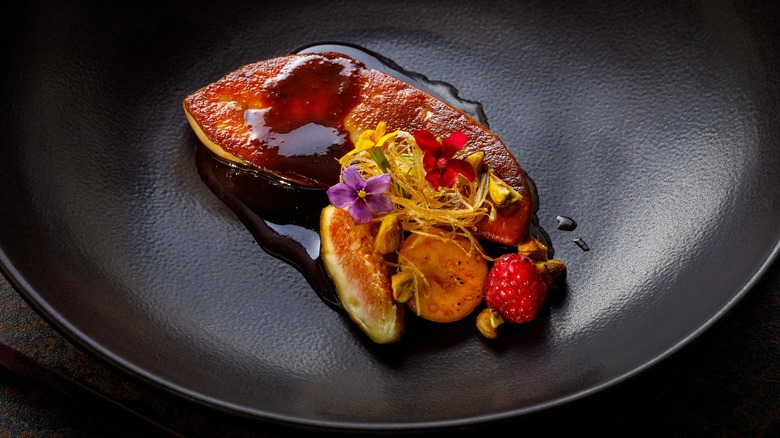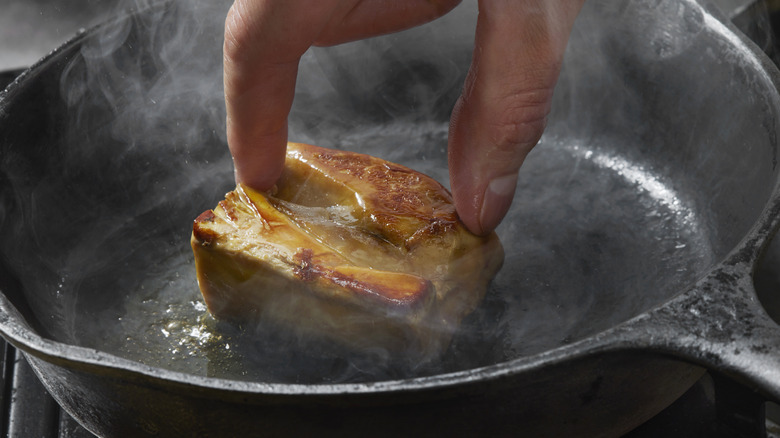The Key To Restaurant-Worthy Foie Gras Is A Perfect Sear Every Time
Although foie gras is controversial as well as decadent, this dish of fattened duck or goose liver can often be found in high-end restaurants. And while a restaurant is likely the most common place where most people encounter foie gras, it need not be. It may seem daunting, but you can easily prepare restaurant-worthy foie gras at home. And the key is getting the perfect sear.
We spoke with Ryan Ratino, the critically-acclaimed chef and restaurateur behind several Michelin-starred restaurants, including Hive Hospitality's Jônt, Bresca, Maass at Four Seasons Fort Lauderdale and Ômo by Jônt, on how to achieve the perfect sear on foie gras. According to Ratino, the key is "having your pan very hot over medium heat before placing the foie gras in the pan." Use a small amount of grape-seed oil in the heated pan — a nickel size dollop is sufficient — then add the foie gras. Ratino emphasizes that heat again, instructing, "Hot hot pan. Beautiful sear on one side then flip. Continue to sear and remove the foie gras when the internal temp is around 105 Fahrenheit." He also suggests lightly spinning the foie gras while it's cooking to even out the sear.
Other tips to keep in mind for cooking foie gras
For the best foie gras results, use a pan that can withstand high heat; Ratino recommends a non-stick pan. The foie gras should start rendering fat as soon as it hits the pan; if it doesn't, your pan isn't hot enough and you should pull out the foie gras and let the pan heat up more. Thicker is better when it comes to slices of foie gras for searing, as thin slices are more likely to overcook, a cooking mistake that can melt your foie gras. Aim for around ½ inch thickness. Also be sure to heavily season the foie gras with salt and pepper before searing.
Opt for the highest quality Grade A foie gras over Grade B when searing foie gras. It is plump, with fewer veins and blemishes, and better suited for searing; also less fat will be rendered out during the cooking process. Always make sure you're using fresh foie gras rather than a pâté, which will simply melt when cooked. Serve your seared foie gras with some bread and dried fruit or fruit sauces made from figs, prunes, or stone fruits, and pair it with a good Sauterne for a luxurious at-home meal to rival that of a restaurant.

